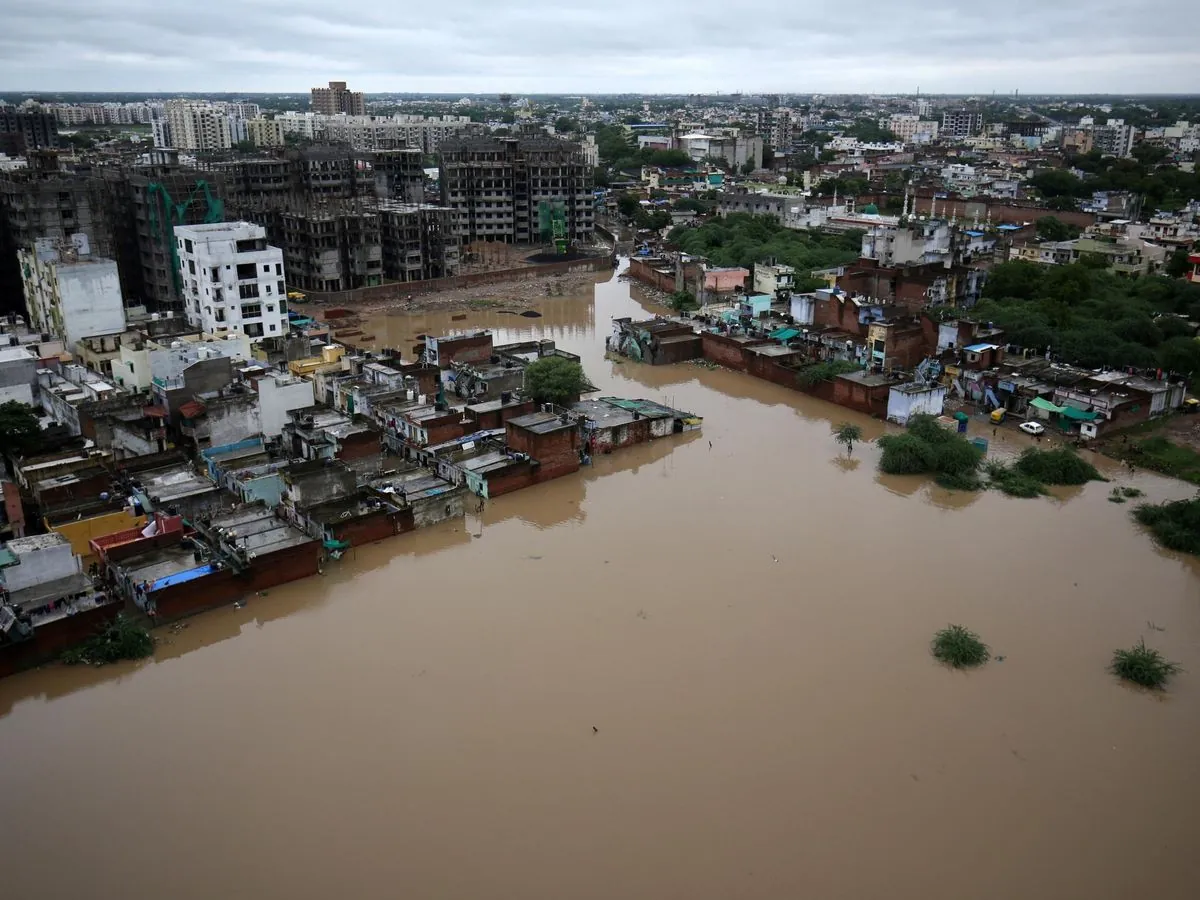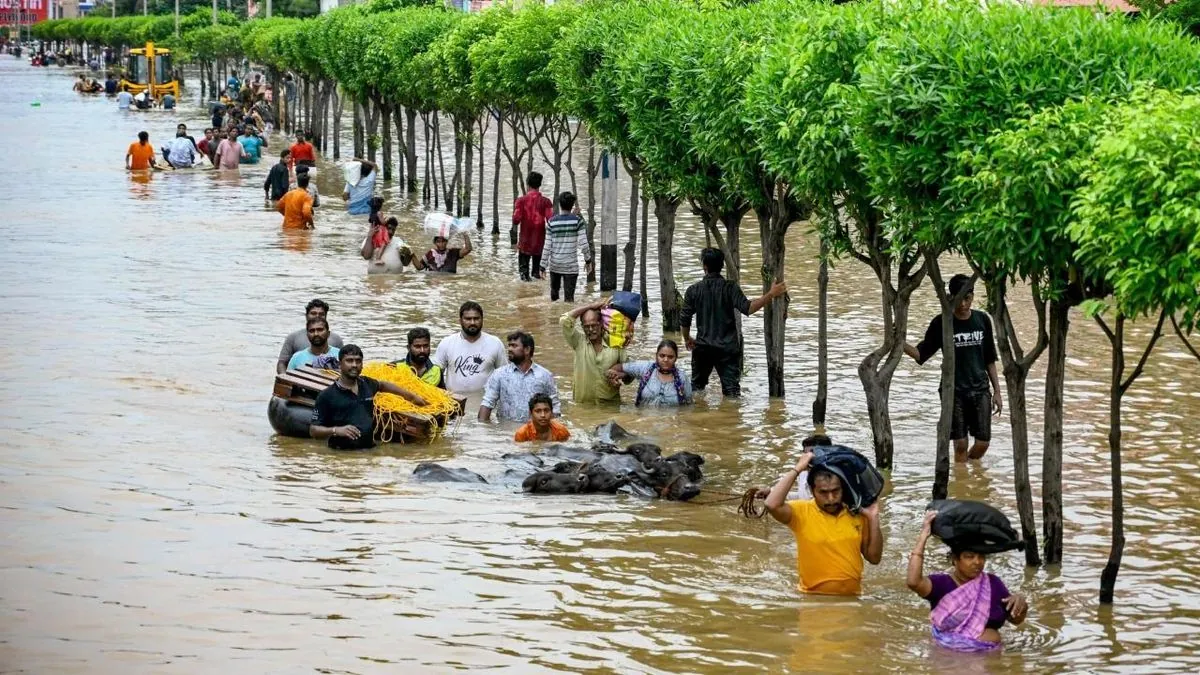Deadly Monsoon Floods Ravage Southern India and Pakistan
Heavy rains cause widespread flooding in India and Pakistan, resulting in at least 38 deaths. Thousands evacuated as cities face severe inundation and infrastructure damage.

Intense monsoon rains have unleashed devastating floods across southern India and parts of Pakistan, claiming at least 38 lives over the past two days. The disaster has forced thousands to evacuate and caused significant damage to infrastructure in the affected regions.
In India's southern states of Andhra Pradesh and Telangana, torrential downpours have led to house collapses and severe disruptions to road and rail networks. Shanta Kumari, Telangana's top bureaucrat, reported that the weather service has issued a red alert for 11 districts, signaling the potential for continued heavy rainfall.

Vijayawada, the commercial hub of Andhra Pradesh, is experiencing its worst flooding in two decades. The Budameru River, a tributary of the Krishna River, has inundated 40% of the city, affecting approximately 275,000 residents in over a dozen residential areas. N. Chandrababu Naidu, Andhra Pradesh's top elected official, stated that disaster relief teams are struggling to evacuate stranded families to safer locations.
In Telangana, A. Revanth Reddy, the state's top elected official, reported that more than 4,000 people have been relocated to 110 government-run relief camps since Monday. The situation is particularly dire in Mahabubnagar and Nalgonda districts, where overflowing water bodies have isolated several villages.
The monsoon's impact extends beyond southern India. Since June, at least 170 people have lost their lives across India's six northeastern states due to floods and mudslides triggered by heavy rains.
In neighboring Pakistan, the situation is equally grim. Flash floods in the southwestern Balochistan province claimed the lives of five children on Monday, bringing the country's rain-related death toll to at least 300 since July 1. The Balochistan disaster management authority reported that these recent fatalities occurred in the Zhob and Khuzdar districts.
The floods have had a widespread impact on Pakistan, inundating dozens of villages, blocking highways in Balochistan, and damaging nearly 20,000 homes across the country. Balochistan alone has seen 32 flood-related deaths in the past two months, including 18 children and 12 women.
"Scientists and weather forecasters have blamed climate change for heavier rains in recent years."
This recent disaster follows the catastrophic floods of 2022, which submerged one-third of Pakistan, resulting in 1,739 deaths and $30 billion in damages. The increasing frequency and intensity of these events highlight the growing impact of climate change on the region's weather patterns.
Both India and Pakistan face significant challenges in managing these disasters, exacerbated by rapid urbanization and inadequate infrastructure in many areas. As two of the world's most populous countries, the economic and human toll of these floods can be severe, affecting agriculture, infrastructure, and millions of livelihoods.
As the monsoon season continues, both nations' disaster management authorities are working to coordinate relief efforts and mitigate further damage. However, the long-term solution may require addressing the root causes of climate change and improving resilience to extreme weather events.


































